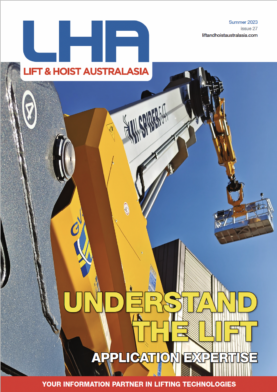)
Automation will impact Australia’s workforce
Some 2.7 million Australian jobs are at risk from automation over the next 15 years, but more than twice as many roles could be created if the nation invests in its workforce, says a report on technology’s impact on the workplace.
The Technology Impacts on the Australian Workforce report found Australian workers are feeling the effects of emerging technologies across industries as jobs are augmented by technology at an unprecedented rate.
Prepared by AI work analytics platform Faethm and ACS, the professional association for Australia’s technology sector, the report said 1.4 million of the 5.6 million new jobs generated in the economy over the next 15 years will be directly tech related, leading to ACS calling for a macro, cross policy approach to be adopted by government to ease the impact on the workforce and address any resulting skills shortages.
ACS CEO Andrew Johnson said, “This ACS commissioned research was undertaken by Harbour City Labs resident Faethm, a Software as a Service Artificial Intelligence platform delivering data, analytics and insights on the impact of emerging technologies. The research methodology looks at the technology adoption and s-curves across seventeen technology categories.
“In addition to occupations and skills requirement forecasts, we also wanted to explore the degree to which imbalances might exist between the adaptability and future-readiness of workers across industries.
“The outcomes tabled in our Technology Impacts on the Australian Workforce report provide deep insights for businesses to inform future workforce development plans, as well as for policy makers to maximise the participation rate of all citizens in the opportunities afforded by the Fourth Industrial Revolution.”
Faethm’s predictions were based on Australian Census data with employment classifications mapped to the company’s job taxonomy of over 1,500 job families to enable like-for-like comparison of the nation’s workforce data.
The 1,511 job families defined in Faethm’s modelling cover 244 attributes such as abilities, knowledge, skills matched with human abilities defined by over 20,000 job tasks to create a matrix measuring each industry’s exposure to automation.
Of the industries examined, Admin and Support Services has the highest automation rate; Information, Media and Telecommunications is the sector most augmentable by technology; while Health Care and Social Assistance is the industry with the highest job growth rate while Finance and Insurance Services has the highest proportion of new technology jobs.
The report called for a macro, cross-policy approach by governments to address impact on the workforce. Globally, other nations’ investment in skills development and transition to date far outreaches Australia’s spending. The report warns that in an environment in which GDP is slowing, the nation’s current and future economy is being further constrained by that underspending.
The report also found the impact of automation on men and women is not equal with 63,000 female financial sector women being forecast to be affected as opposed to 45,000 men. While 100,000 women in the profession, scientific and technical services sector stand to be impacted compared to 84,000 men.









